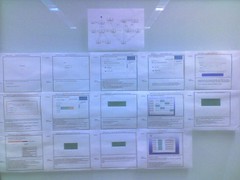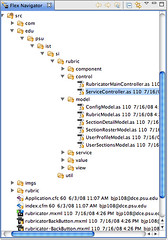In my past few posts, I tried to shed a little light on my interest in an open data model for educational rubrics. If you’re new to the general concept of a rubric, there’s a fine summary on Wikipedia. So what do I mean by an “open data model”? Let’s break that down.
Again from our friend Wikipedia:
A data model in software engineering is an abstract model that describes how data are represented and accessed. Data models formally define data elements and relationships among data elements for a domain of interest.
The jist is that we need a way to describe rubrics, whole or in part, for use in a software system.
Most of the online rubric generator tools produce a rubric document – usually in HTML, or possibly PDF or Excel, that lends itself well to printing and other pre-Internet use cases. But document rubrics are not easily integrated into any sort of information system – in these cases, they are merely presentational forms of a rubric, and contain little or no semantic information about the meaning of the various parts of the document. So the world of computerized rubrics is similar to the state of Web development in 1999 – lots of non-semantic, presentation-laden documents that are hard to process by any sort of software.
So why an open data model? My thoughts on this tend to group into two arguments:
- transportability – a rubric is a document that should be able to move from one technological system to another. There are a few existing rubric tools that do create a computer-readable rubric document, but the file format is proprietary – rubrics created in such a system can only be used in that system, and can’t be exchanged with other systems that might be able to use them, except in some presentational form like PDF.
- continuity – relying on any sort of proprietary system as the sole means of reading and storing important data is no longer an option. Even de facto standard formats like Microsoft’s Word DOC and other Office file formats are deemed too risky by many governments, leading to the creation OpenDocument Format Alliance.
So what type of format should we use? HTML and XML are great at describing the structure and content of documents, but less so the meaning implied by the information.
The Semantic Web provides some exciting possibilities for open data in all forms. So why not rubrics?
Next: Semantic Rubrics


